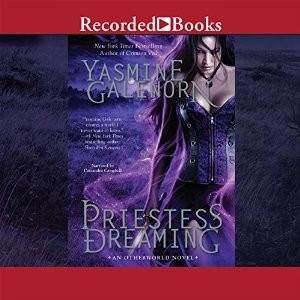
![]() Following our Spooky Halloween theme, Shannon put together this comparison of Urban Fantasy and Paranormal Romance:
Following our Spooky Halloween theme, Shannon put together this comparison of Urban Fantasy and Paranormal Romance:
Around the beginning of Autumn, I notice an increase in discussions of horror and other types of fiction featuring supernatural phenomena. I’m personally not a fan of horror, but I do love my vampires and my shapeshifters. I’ve even been known to enjoy a few things featuring demons. Ghosts don’t do it for me, but I think I’m in the minority. Paranormal romance is a perfect fit for me, and, apparently, for many others as well. The popularity of this subgenre of romance seems to be growing in leaps and bounds.
So, let’s take a look at paranormal romance, and what it is. It’s often confused with urban fantasy. The two do have several common themes, but, as all romance readers know, a romance novel needs to focus on giving readers that HEA (Happily Ever After, for the uninitiated). In paranormal romance, romance is a more central part of the plot, rather than being a sort of sideline. It’s tricky though, since urban fantasy novels often contain a love interest.
It’s also about the narrative voice. In urban fantasy, we often hear the story from one person’s point of view. For example, In Ilona Andrews’ Kate Daniels series, all the information we get is filtered through Kate, our heroine. In Yasmine Galenorn’s Otherworld series, each of the three leading ladies takes turns acting as our window into the world. Both these series are written in first-person point of view.
Paranormal romance is a little different. Each book in a series tends to focus on one couple. We see things from both the man’s and the woman’s point of view. Nalini Singh’s Psy/Changeling series is the perfect example of paranormal romance. Larisa Ione‘s Demonica, J.R. Ward’s Black Dagger Brotherhood, and Lara Adrian’s Midnight Breed are other popular paranormal romance series.
In urban fantasy, characters have a longer time to change and grow than they seem to in most paranormal romance series. Since urban fantasy series have a more limited range of character point of view, we get to know the characters in ways we can’t always manage in paranormal romance. In Jennifer Estep’s Elemental Assassin series, readers have watched Gin’s character evolve over the course of just over a dozen books. In Gena Showalter’s Alien Huntress books, each couple has only one book in which to shine. Characters will return in future books, but the spotlight shines on the book’s central couple.
Obviously, what I’ve written here should serve only as a general guide. Every rule has its exceptions. A lot of wiggle room exists between these two closely-related subgenres, making classification anything but an exact science.
If you’re a romance reader who loves psychic powers, vampires, shapeshifters, witches, ghosts or demons, you might find yourself falling just a little bit in love with paranormal romances.
Shannon
You may also enjoy:

Fantastic article Shannon! I sometimes have a hard time designating between these two sub-genres and find myself short-handing it PNR/UF. Your articles has made it seem so much easier to differentiate! Thank you!